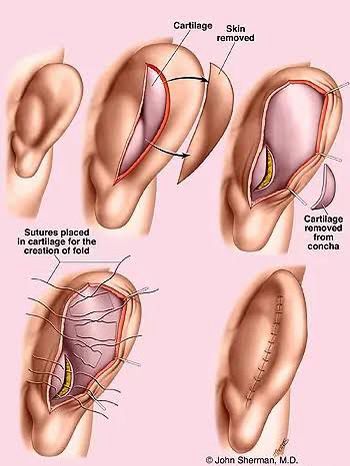(FAQs) about Bat Ear Correction
During otoplasty, an incision is made behind the ear to access the cartilage. The surgeon then reshapes the cartilage and may remove excess skin if necessary. The ear is then repositioned closer to the head and secured with sutures.
Discomfort during otoplasty is usually minimal as anesthesia is administered to numb the area. Patients may experience some mild pain or discomfort in the days following the surgery, which can be managed with prescribed pain medication.
Recovery from otoplasty typically involves wearing a headband or bandages over the ears to support the new shape and position. Most patients can return to normal activities within a week, although strenuous activities should be avoided for several weeks.
As with any surgical procedure, there are potential risks and complications associated with otoplasty, including infection, bleeding, asymmetry, and changes in sensation. However, these risks are relatively low when the surgery is performed by a skilled and experienced surgeon.
Scarring from otoplasty is usually minimal and well-hidden behind the ears. Over time, any visible scars tend to fade and become less noticeable.
While initial results are visible immediately after surgery, it may take several weeks for swelling to fully subside and for the ears to settle into their final position. The final results of otoplasty are typically apparent within a few months.

